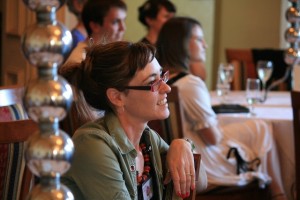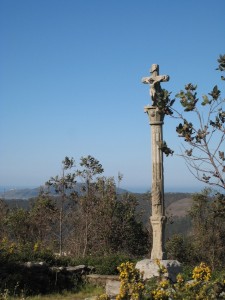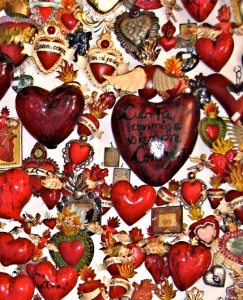
Here is a guest post by Lisa J Cole.
It was written in response to the conversation last week between me, Bruno Lettieri and Barry Garner, at the Twilight School at Rupertswood in Sunbury.
Welcome Lisa!
Tell me, what is it you plan to do with your one wild and precious life?
That sentence is from Mary Oliver’s poem titled The Summer Day. Mary is an American poet, and right at the very end of her poem we are left to answer this question. The beginning of the poem, where first she describes a grasshopper cleaning its face with its feet and having enormous and complicated eyes, takes us on a journey, and then we are left with a question to ponder, grapple with, conjure or create with.
For many of us, it’s a tough question to answer at the best of times. But it didn’t seem that way the other night for the Pilgrim and the Verandah Sitter at the first Open House event at Rupertswood Mansion for 2013.
Ailsa Piper, writer, director, actor and graduate pilgrim shared with her captive audience that to live this ONE life is a good place to start. There is no other, just this ONE. Barry Garner, local Sunbury writer and author of Haloes in the Windscreen, shared that he sits on his verandah and reflects where he’s been and where he’s going next with the PRECIOUS people who he loves and respects around him.
These accomplished authors read from their books, laughed together and relaxed over a microphone last Wednesday night but most importantly publicly declared their personal journeys of walking. Ailsa’s pilgrim-style walking took her 1200km across Spain, alone and carrying with her a bunch of other people’s sins. Barry’s life centres in and around his suburb of Sunbury and he retold stories to the audience how he used to walk around the block with his daughter, Kylie, because she wanted to get fit. He discovered a deep connection with his daughter again. Is the importance on the ONE or the WILD or the PRECIOUS? Maybe it’s all of them.
We discovered, as we listened into this conversation that Ailsa’s greatest addiction is poetry, followed closely by walking and the intrigue and unique beauty and slowness of snails. She has a small snail engraved permanently into her skin to remind her to slow down in life.
Barry declared that he’s spent over 55 years believing he’s not good enough, but once he found writing he could express himself to the world and published a piece about his daughter Kylie leaving home in The Age. He had a rough ride last year through the festive season, but a brisk visit to Philip Island with a loyal friend filled his lungs with hope and belief that no medicine could. The room filled with enormous gratitude for two people who simply were brave enough to open up their lives and hearts to us.
The cooler Melbourne weather brought relief and fresh thoughts. As I sat and listened, my gaze fixed out the bay window on the quick, darting black birds moving efficiently and effortlessly from branch to branch. I wonder if they ponder taking on the snail’s slow life. I hear words and then applause. The bay window of the dining room sparkles; clear as if the glass was an illusion.
And in a moment it’s there – life is not a dress rehearsal. Not for a snail, or a grasshopper, or the darting black birds outside or for Ailsa Piper or Barry Garner or for any one of us sitting in that room. We have enormous lives full of potential and possibility, often complicated and too busy. The secrets to answer our question are locked up in the den and they need to be set free, especially the secrets about the ONE WILD and PRECIOUS life we all wish to live. These thoughts need to breathe and grow and walk across countries or around suburban blocks. Set them free.
How about we all start with this ONE moment in our lives and see what happens next.

Gracias, Lisa. It was such pleasure to sit in those remarkable surrounds and to share the stage with two such thoughtful gentlemen. Gentle men who attend to the world about them, and to their place in it. That is what dignifies Mary Oliver for me – the way she pays attention, and in doing so, makes me open my eyes, ears and heart to wonder. Natural wonder, in particular. Her grasshopper is so particular and real for her.
Rather like my snail.
Yes, it was an evening of paying attention and shared humanity. The audience at Rupertswood was welcoming, the stories they shared were inspiring, and the birds sure did sing. My sister Amanda came along with me to take photos of the evening, and life really did feel precious…
Gracias Lisa. Gracias Bruno and Barry.
And as always, Gracias Mary Oliver.
Do take a moment to look at the comments on this post. Very grateful to Darren and Jim for two beauties. A camino and some snail-talk!




